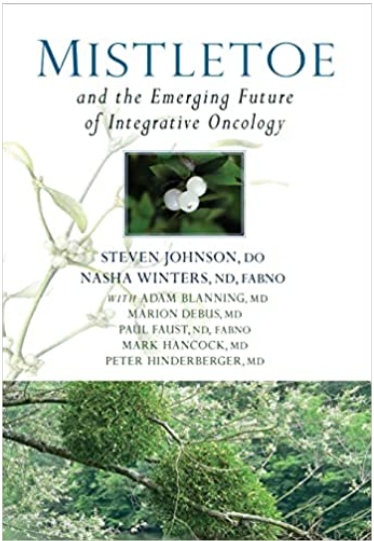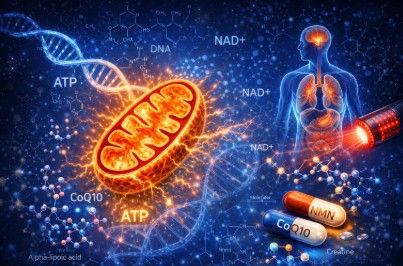Mistletoe and the Emerging Future of Integrative Oncology: Book Review
- The Bioregulatory Medicine Institute

- Jun 28, 2022
- 2 min read
Updated: Jun 29, 2022
Written by Steven Johnson, DO, Nasha Winters, ND, FABNO, Adam Blanning, MD, Marion Debus, MD, Paul Faust, MD, Mark Hancock, MD, and Peter Hinderberger, MD
This fascinating and informative book was structured following the syllabus for a three-day practitioner training hosted by the Physicians’ Association for Anthroposophic Medicine (PAAM).
The chapters highlight several key lectures in a condensed form. The book is constructed as a journey and is ideal to read in its entirety. All 12 chapters are brilliantly written by a different physician, each with an extensive background in the uses of mistletoe in oncology.
For thousands of years, mistletoe has been viewed as one of the most magical, mysterious, and sacred plants in nature. Mistletoe, or Viscum, was used by the Druids and the ancient Greeks and appears in legend and folklore as a panacea. The modern tradition of kissing under the mistletoe can be traced back to ancient mistletoe lore. In the scientific community, mistletoe has been studied as an anticancer agent since the 1920s because its extracts have exhibited both cytotoxic and immunomodulatory properties. Currently, mistletoe extracts are not only used in oncology but also have proven effective in the treatment of infectious diseases and degenerative joint disease.
Injectable mistletoe extract was first used for cancer therapy in the 1920s by Rudolf Steiner, Ph.D., and Dr. Ita Wegman based on anthroposophical medicine principles. In Europe, mistletoe therapy is no longer controversial, and oncologists have continued to prescribe mistletoe extracts for the past 90 years. By some estimates, 40 percent of French and up to 60 percent of German cancer patients receive this botanical extract. However, the U.S. FDA has not approved mistletoe as a treatment for cancer or any other medical condition.
Like so many inexpensive plant-based cancer remedies, mistletoe extracts do not reap high profits for any of the big pharmaceutical companies. Mistletoe extracts are inexpensive and can be easily self-administered. Despite growing international medical literature in support of Iscador, Helixor, and other mistletoe extracts’ anticancer properties, it continues to be blacklisted by the American Cancer Society.
The cytotoxic efficacy of mistletoe extracts against cancer cells has been evaluated in numerous evidence-based studies, as well as in vitro and in vivo laboratory experiments, and mainly positive antitumor activities have been reported. It is well established that mechanisms underlying the anticancer activity of mistletoe involved apoptosis and immunomodulation/stimulation of pro-inflammatory cytokines. This points to an improved balance of the innate immune system. Studies confirm that mistletoe extracts prolong survival, improve quality of life, and can be tremendously useful in preventing recurrence, rendering them more relevant today than ever before.
Mistletoe and the Emerging Future of Integrative Oncology is a pioneering book that explains the clinical uses of mistletoe and describes case studies. Whether you are a practitioner with extensive experience in mistletoe use in oncology or are new to the subject, this book has something for everyone.
Review by James P.M. Odell, OMD, ND, L.Ac.




